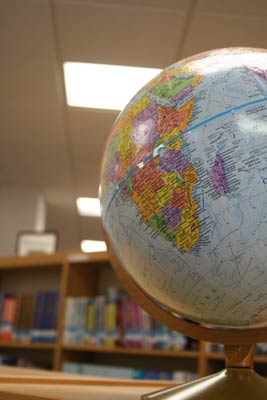All Nonfiction
- Bullying
- Books
- Academic
- Author Interviews
- Celebrity interviews
- College Articles
- College Essays
- Educator of the Year
- Heroes
- Interviews
- Memoir
- Personal Experience
- Sports
- Travel & Culture
All Opinions
- Bullying
- Current Events / Politics
- Discrimination
- Drugs / Alcohol / Smoking
- Entertainment / Celebrities
- Environment
- Love / Relationships
- Movies / Music / TV
- Pop Culture / Trends
- School / College
- Social Issues / Civics
- Spirituality / Religion
- Sports / Hobbies
All Hot Topics
- Bullying
- Community Service
- Environment
- Health
- Letters to the Editor
- Pride & Prejudice
- What Matters
- Back
Summer Guide
- Program Links
- Program Reviews
- Back
College Guide
- College Links
- College Reviews
- College Essays
- College Articles
- Back
Breaking the Walls of Division
Trust is the foundation of all human connections, from chance encounters to friendships and intimate relationships. Ever since the Stone Age, people have lived in “trust” groups of 15 or 20 with whom they hunted or traded; or with whom they had children. Even a casual look at patterns of life in villages and small towns shows us that this has not changed very much. Why? This is because people are by nature clannish and tribal. The reason large groups of strangers (or any stranger at all) are viewed with suspicion is because we immediately feel threatened with disruption or wonder which way things might go. Since it is better policy to be safe than sorry we “wall” off the stranger or strangers.
We tend to put these shields around ourselves to feel safe. But are we truly free? Writing this article at a time when the 73rd session of UN General Assembly (UNGA 73) is deliberating on promotion and implementation of new global compacts on migration and refugees as one of the seven priority themes reminds us of physical orders that were marked off in different parts of the world especially in Asia and Africa in the last century. It gives us a chance to think about walls of different kinds in our physical world while the www of internet operates in the ether. Natural borders like the Himalayas have caused different kinds of linked societies to develop over the millennia but have man-made walls done well? The Great Wall of China did not, nor did the Berlin Wall.
The icon of slow journalism Paul Salopek, who set out to follow the “Road out of Eden” traveling from Ethiopia in Africa on the beat of his footstep, outward into different parts of the world, was recently in India where he found the borders between India and Pakistan utterly artificial. True there were Hindus amongst Muslims on one side and Muslims among Hindus on the other, but “People on both sides are Punjabis. They grow the same crops, like the same music, eat the same foods and dress similarly.” Salopek also dwelt at some length on the sociology of walls and borders saying that if you traveled at great speed over geographic terrain in a car or train or plane you never really come into contact with people except in artificial environments like airports.
As Paul Salopek travels from country to country, culture to culture, on the mission of ‘slow down, find humanity’, he finds people to be pretty much the same. “I don’t see color or language anymore. Whether it is a Bedouin nomad in Saudi Arabia, a photojournalist from Turkey or a brilliant scientist in Georgia, they all talk about the same things — family, jobs, governments, climate change, about what they have or do not have. Worries are the same; so are their hopes.” Geographical borders are fluid; they might change with war, policies or famines but the border that divides our inner and outer selves is the ultimate border that should really concern us. They are walls of prejudice, of ignorance, of fear and worst of all — pride in being all of these things. They give us a false sense of security and safety.
Probably because the world seems to be shrinking with electronic communication creating a borderless world, the walls in the mind are gaining strength. Do we still surround ourselves with fences and walls? Of course, we do and the invisible ones are the hardest to break down. Most people feel safe in communities that subscribe to the same beliefs and norms and right or wrong cling to the same patterns of social behavior. Undoubtedly, therefore, the ultimate border is the human skin: the wall between the inner and the outer self which is the border we can’t seem to get rid of. All spiritual quests have been journeys of the mind to get through this final emotional frontier, the fence of the self. Surely, independence’ is to control strong personal prejudices and communicate meaningfully with the other.

Similar Articles
JOIN THE DISCUSSION
This article has 1 comment.

0 articles 0 photos 3 comments